Guest post by Sarah Gerhardt
Slugs and snails are often seen as the gardener’s worst enemy. Vegetable gardeners and those growing herbaceous ornamentals like hostas both dread their insatiable appetite for leafy greens.
Today’s blog post takes a closer look at these fascinating creatures and explores why we should change our negative stance towards them. We’ll also explore methods to control snails and slugs in the garden, and find ways to coexist with them in an eco-friendly manner.
Why do snails have shells and slugs do not?
Slugs and snails are mollusks – soft-bodied animals without a backbone. They are perceived as slimy because they are covered in mucus that stops their bodies from drying out. They sense their surroundings with the help of four retractable tentacles on their heads which are equipped with tactile receptors. The top two of these tentacles have eyes, the shorter bottom ones are for detecting scents.
Have you ever wondered why snails have shells while slugs do not? Slugs actually have shells too, but they are greatly reduced and often hidden under their skin. There are also semi-slugs, where the shell is still visible but too small for the slug to retreat into, though these are rare in the UK.
It is believed that slugs reduced their shell over time as an evolutionary advantage. A reduced shell allowed them to burrow underground which let them explore a new habitat that snails cannot access. It also meant that they could survive in areas low in calcium which is needed to build a snail shell.
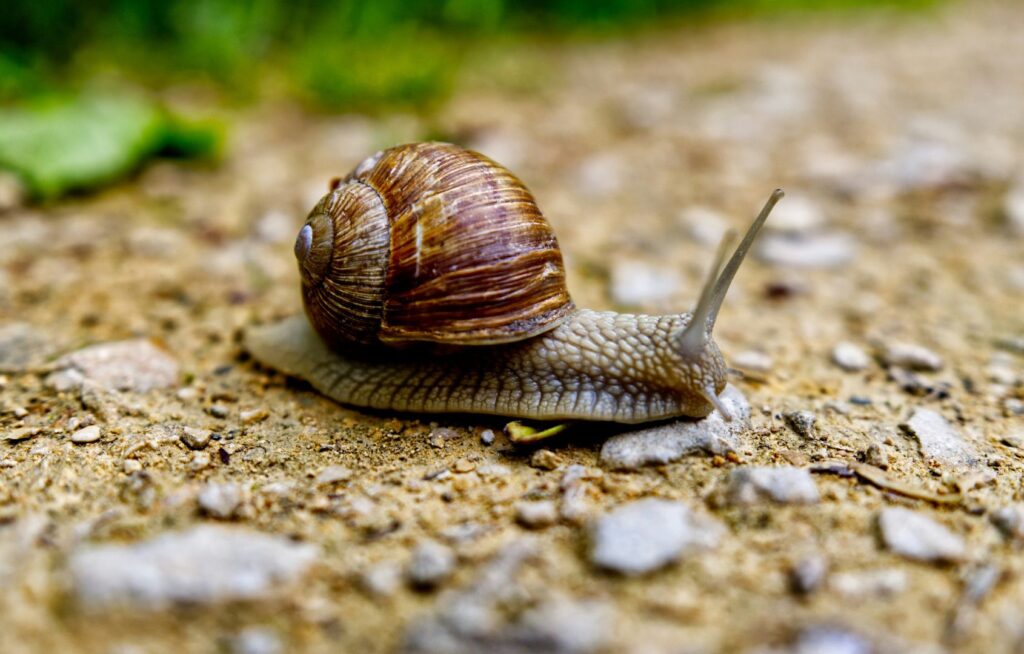
Why are slugs and snails good for your garden?
The UK is home to 90 species of snails and over 44 species of slugs. They are distinguished by features such as shell shape, sole colours and mucus colours and can be difficult to identify.
Only a very small amount of the species of slugs and snails in the UK are actually causing any major harm to the plants growing in your garden. In fact, most of them are highly beneficial and part of a healthy ecosystem.
Slugs and snails are excellent at breaking down and recycling decomposing organic matter. Many slugs and snails feed on decomposing organic matter such as dead leaves, dung, and even dead slugs and snails. Their composting action aerates the soil and their excrements add nutrients back into the soil. Furthermore, they are themselves a great source of food for birds, newts, toads and hedgehogs.
Their role in the ecosystem cannot be overstated. By breaking down organic matter, they contribute to the creation of rich, fertile soil. This process is crucial for maintaining soil health and promoting the growth of plants. Additionally, their presence in the garden helps support a diverse range of wildlife, contributing to the overall biodiversity of the area.
How can you control slugs and snails in your garden?
Some of the species that are mostly likely to feed on garden plants are the common garden snail, the netted field slug, and the brown soil slug. They enjoy soft fleshy leaves and seedlings. The large ragged holes left on leaves are an indicator that they have been feasting using their rasping mouthparts. Potatoes and other tubers may be affected by the keeled slug, a mostly underground dweller who feeds by creating tunnels through the tubers. Slugs predominately feed at night.
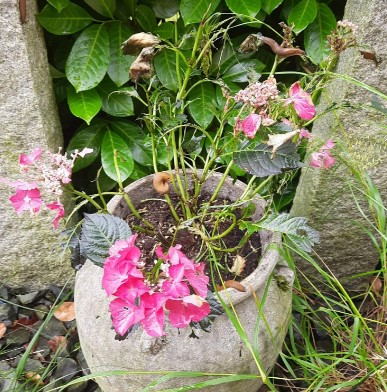
Protecting vulnerable plants
Since they play such a vital part in maintaining a healthy ecosystem we should try to control rather than eradicate slugs and snails. Rather than poisoning them which disrupts and damages the entire ecosystem we should take a targeted management approach. This involves protecting particularly vulnerable plants such as seedlings and soft young shoots on herbaceous plants. Leave vulnerable seedings to become more sturdy in pots and protect them with cloches as needed before you transplant them.
Choosing the right plants
We can choose plants that slugs and snails are less interested in such as woody plants, plants with thick or waxy leaves and those herbaceous plants that are known to be less favoured by slugs and snails. A list of RHS approved slug and snail tolerant plants can be found here : https://www.rhs.org.uk/biodiversity/slugs-and-snails
Encouraging natural predators
Another great way to reduce slug and snail damage in your garden is to encourage predators such as birds, frogs and hedgehogs into the garden. This is also a great way to increase biodiversity. Some people have had great success by keeping ducks who have been reared to feed exclusively on slugs. These ducks can be particularly effective as they have a natural inclination to forage for slugs, helping to keep their populations in check.
Manual removal
Simply picking slugs off the plants on a mild, damp evening can be a pretty effective means of controlling them. This hands-on approach, while time-consuming, can significantly reduce their numbers and minimise damage to your plants.
Barriers and deterrents
There are many different ways of slug and snail control using barriers. These include mulches around plants using sharp or rough materials such as bark, copper tape, eggshells, sharp grit, coffee grounds or wool pellets, or strong smelling substances. Most of them have no conclusive scientific evidence to prove their effectiveness. However, every garden is different and the local conditions may make one method more effective than another so there is no harm in experimenting with some of these methods as long as they do not have a negative impact on the overall health of the garden.
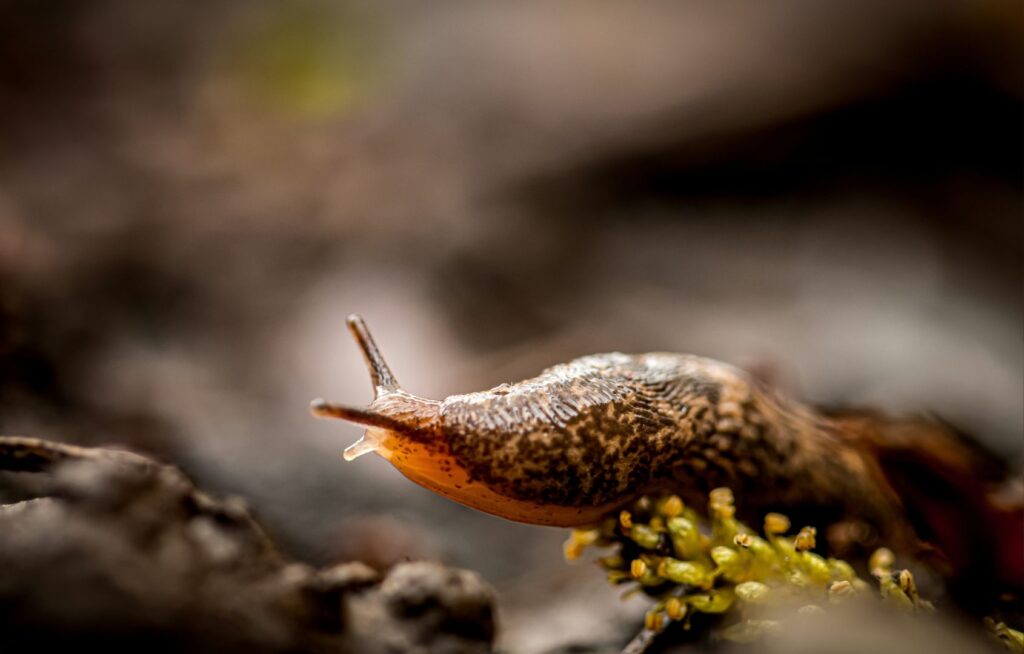
Using traps
Traps are another option to reduce the slug and snail population in your garden. Many different types of traps exist. Place half-filled jars of beer in the ground or put down scooped out halves of orange, grapefruit or melon near vulnerable plants. Slugs and snails will be attracted to these when they feed at night and can be removed easily every morning.
Biological controls
Avoid using slug pellets. All forms of slug pellets cause damage to various kinds of wildlife in the garden and can thereby disrupt the ecosystem. If used in a targeted manner, biological controls are a better option because they only affect mollusks. Nematodes such as ‘Nemaslug’ can be applied by watering them into the soil. These nematodes are soil-dwelling so affect slugs a lot more than snails. The nematodes enter the slugs’ bodies and infect them with bacteria that cause them to die. Biological controls should only be used sparingly and as a last resort because they kill all types of slugs including the many species that don’t feed on live plants and are of great benefit to the garden.
Combining different strategies
Ideally, we should be taking an Integrated Pest Management (IPM) approach to controlling slugs and snails in a garden. IPM is a sustainable approach to controlling pests that combines different management strategies and practices. The goal is to reduce pest populations to levels that do not cause economic harm while minimising risks to human health and the environment. For slugs and snails, IPM might include a combination of creating habitats for predators, manual removal, barriers and biological control.
If possible, try to learn to live with slugs and snails in your garden. They are part of the garden’s ecosystem and will always be present if a garden has the right conditions for them. By taking a more tolerant and integrated approach to managing them, we can create healthier, more resilient gardens.
About the author: Sarah Gerhardt is a gardener, linguist and punk musician based in Edinburgh. She was head gardener at the Dean Gardens, Edinburgh for 9 years and runs her own gardening business Gerhardt’s Garden Service. Find out more via her Linktree: https://linktr.ee/gerhardtsgardenservice
-
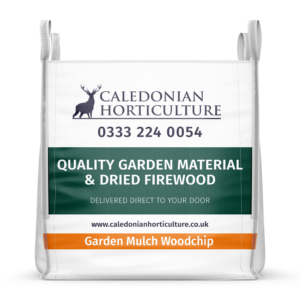 Builder’s Bag Garden Mulch Woodchip£58.00 inc VAT
Builder’s Bag Garden Mulch Woodchip£58.00 inc VAT -
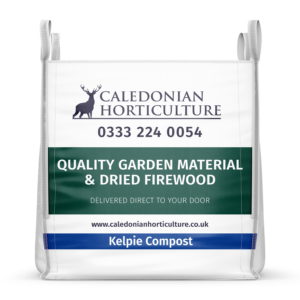 Builder’s Bag Kelpie Compost£72.00 inc VAT
Builder’s Bag Kelpie Compost£72.00 inc VAT -
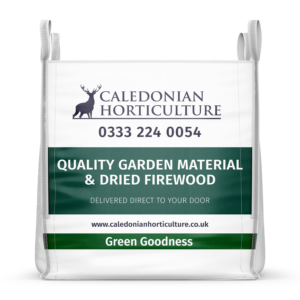 Builder’s Bag Green Goodness£52.00 inc VAT
Builder’s Bag Green Goodness£52.00 inc VAT

